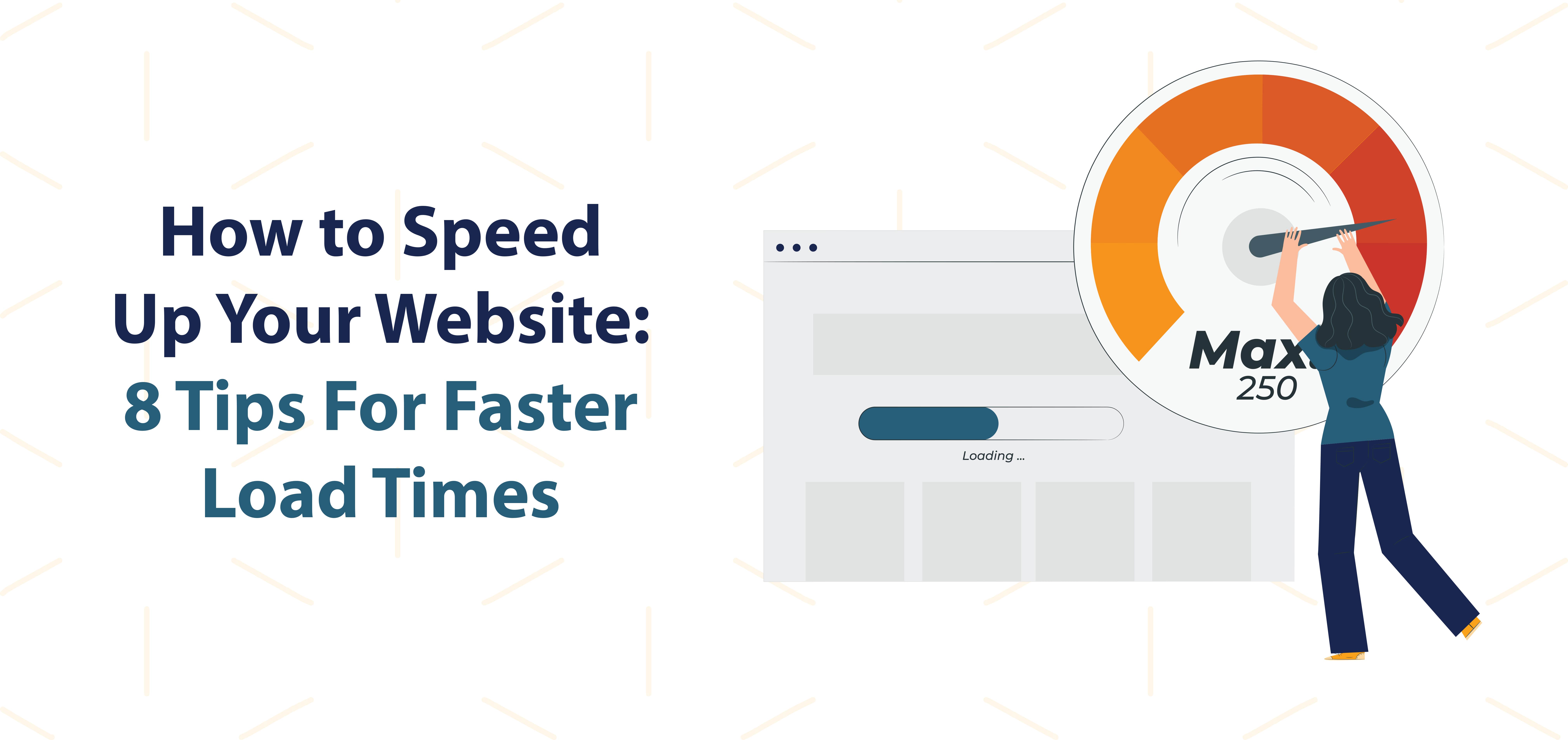
How to Speed Up Your Website: 8 Tips for Faster Load Times
Posted on March 27, 2023
-
Category:
- Atlanta Web Design,
- Web Development
In today’s fast-paced digital world, website speed is critical. If a website requires more than five seconds to load, visitors will likely become frustrated, which results in higher bounce rates, lower engagement, and fewer conversions. To deliver a favorable user experience, business owners and marketers must prioritize website speed as part of their website design and website development process. Below are some tips for decreasing load times for your website:
- Optimize images.
Because photos and other graphical elements are often the largest files on a website, optimizing them can have a significant positive impact on website speed. To decrease image file sizes without sacrificing quality, simply reduce the dimensions of the image and compress it using the correct file format. There are many image optimization tools available, such as TinyPNG, that can help you reduce image file sizes and improve website speed. - Strengthen your search engine optimization.
Website speed is also critical for search engine optimization (SEO). Search engines like Google use page speed as a ranking factor in their algorithms. The faster your website loads, the more likely it is to rank higher in search engine results pages (SERPs)—which in turn promotes increased traffic and conversions. - Optimize for mobile devices.
Because photos and other graphical elements are often the largest files on a website, optimizing them can have a significant positive impact on website speed. To decrease image file sizes without sacrificing quality, simply reduce the dimensions of the image and compress it using the correct file format. There are many image optimization tools available, such as TinyPNG, that can help you reduce image file sizes and improve website speed. - Minimize the number of HTTP requests.
During every visit, a webpage makes an HTTP request—meaning a request from the server for resources such as images, scripts, and style sheets. The more HTTP requests that a website must make, the longer it takes to load. You can lower the number of HTTP requests by combining text files, reducing the volume of images and scripts, and using CSS sprites to combine multiple images into one file. - Use a content delivery network.
A CDN is a network of servers that deliver website content to users based on their geographic location. Using a CDN can improve website speed by reducing the distance between the user’s computer and the server. CDNs also help distribute server loads; this can improve website speed during high-traffic periods.
- Minimize server response times.
The amount of time it takes for the server to respond to a user’s request can impact website speed. You can decrease server response times by optimizing your code, reducing the number of database queries, and choosing a reliable hosting provider. - Use browser caching.
Browser caching allows users to store images, scripts, style sheets, and other website resources on their local devices so that those resources won’t have to be downloaded with every visit. That translates to significantly improved website speed for returning visitors. You can set the expiration date of cached resources to control when they should be re-downloaded. - Reduce the number of plugins.
Although plugins can add functionality to a website, they can also slow it down. Each plugin adds code that must be downloaded, increasing the number of HTTP requests and prolonging load times. You can improve website speed by reducing the number of plugins and using only those that are essential.
Having a website that loads quickly has never been more important. Rather than risk a poor user experience and a decrease in search engine rankings and conversions, take the time to create a website that loads quickly and promotes the overall success of your organization.
Atlanta-based graphic design agency Badie Designs LLC specializes in creating innovative marketing, UX/UI design, and branding solutions for a broad spectrum of organizations. Contact us today for a consultation.
